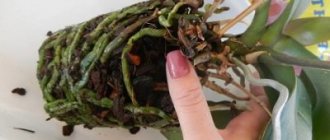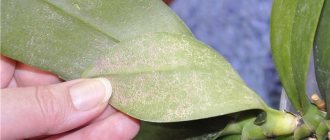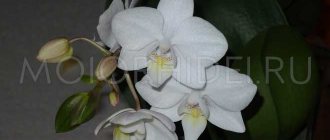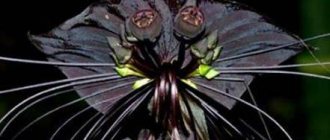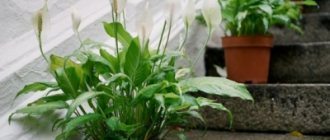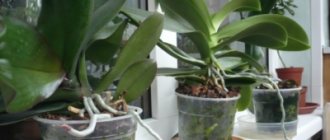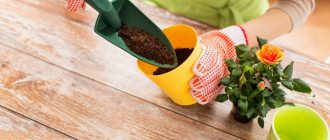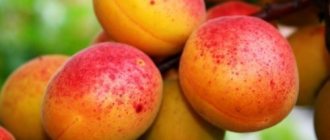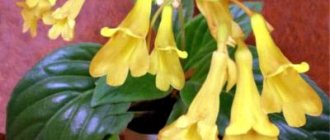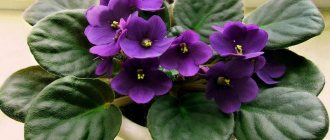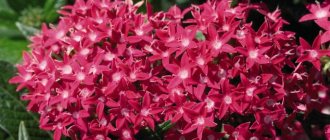Beginning flower growers consider orchids to be rather capricious plants, since they require non-standard conditions for care and planting. One of the common mistakes of novice indoor flower lovers is planting this species in ordinary soil, and not in special soil. It is important to note here that the substrate for orchids can be different, because on Earth there are a huge number of species adapted to live in the wild, both in trees and in marshy areas, in open ground and simply on rocks.
What kind of soil do orchids need?
When talking about orchids, they often mean the most common type at home - phalaenopsis. However, true connoisseurs of this exotic beauty also buy other types for their collections.
The most common indoor types are:
- lady's slipper or paphiopedilum;
- Cambria;
- Wanda;
- Cattleya;
- oncidium;
- cymbidium;
- dendrobium.
Also, valuable species such as Ludisia, Miltonia and Dracula are common among plant lovers.
Many of these species are epiphytes, so the most suitable substrate for orchids is simple bark, in some cases mixed with charcoal and sphagnum. This is the optimal soil for phalaenopsis, dendrobium and lady's slipper orchids.
Species such as Oncidium, Cymbidium, Cattleya and Cambria also grow in woody soil, but require a finer fraction. Quite often, the bark can be mixed with universal peat soil, sphagnum or industrial substrates such as vermiculite or ceramis. All these industrial components included in the soil create additional aeration and oxygen flow to the roots, which allows the plant to develop.
If we talk about soil for cymbidium, due to the massiveness of the bush, this orchid will require heavier soil, so quite often fine bark is mixed with ordinary black soil and moss. It is worth remembering that a beauty planted in the ground will not be able to exist in it for a long time, so the correct proportions must be observed. The composition of the substrate for cymbidium should contain 3 parts of fine pine bark, sand, perlite, charcoal, leaf humus or peat, and moss.
Another interesting feature is that some species, such as vandas, can live without any substrate at all. Moreover, if other orchids need adaptation for this, then for vandas this is a natural phenomenon. At the same time, the difficulty in care is that the plant needs a constant supply of moisture, so if the apartment is quite dry, then the vanda may not like it.
Quite often, owners use moss for orchids in order to increase the moisture capacity of the substrate, and some species are grown directly in it. Peat used for growing teenagers has approximately the same moisture capacity. This type of soil for orchids is perfect for mini phalaenopsis, for teenage varietal plants, as well as for herbaceous plants that prefer open ground.
When replanting orchids, it is important to take into account the characteristics of their root system: some need a moisture-intensive substrate, others require good drying. It should also be remembered that almost all species intended for indoor keeping are epiphytes, so growing them in water or ordinary soil is contraindicated!
What can I use for the substrate?
Osmunda fern roots
The unique composition of fern makes it an ideal substrate component. It contains almost all the nutritional elements for an orchid.
Perlite
Natural material of volcanic origin. Free from impurities. Does not harm plants. Capable of collecting moisture and expending it in doses. Used as an addition to the substrate.
Humus
Leaf humus is added in small doses. Its main danger is the content of pathogenic microorganisms and insects. Before adding it to the substrate, it must be disinfected.
Pine cones
They are used, having previously been divided into flakes, as an additive to the main substrate. Whole buds are inconvenient due to their ability to open and close with changes in humidity.
Natural cork fiber
Rare material. Typically used as a replacement for coconut fiber or moss.
Activated carbon
Disinfectant. Crushed tablets are sprinkled over the cut areas and thus combat problems in the root system. This is a common situation during plant transplantation.
Charcoal
It is often added to the composition, but not more than 5% of the total mass. Has the following beneficial properties:
- improves water and air permeability of the substrate;
- prevents acidification, increases pH;
- natural antiseptic;
- prevents the soil from becoming waterlogged;
- prevents the development of putrefactive processes;
- absorbs harmful substances.
Over time, charcoal accumulates a lot of salts, which can negatively affect the plant. It is necessary to take proven coal. It is best to burn birch logs yourself, and take the coals as a component of the substrate.
Sphagnum moss
Common substrate component. It absorbs moisture from the air well and contains a lot of nutrients that are missing in the bark. The minimal microflora of moss does not allow the development of pathogenic bacteria.
Vermiculite
Its main advantage is the regulation of air-water balance. It absorbs more moisture than its own volume. Prevents drying out and clumping. Contains a sufficient amount of useful microelements. Prevents salinity and acidity.
Styrofoam
Used as drainage and as an element of stability. Good air permeability.
Expanded clay
With the help of pores, it retains not only moisture, but also salts contained in water for irrigation. Over time, their quantity accumulates, the substrate becomes saline, and expanded clay ceases to accumulate moisture. Another disadvantage is that it draws moisture from the roots when it dries out.
Coconut fiber
Absorbs moisture well and regulates soil moisture. An organic component that has some characteristics superior to peat. Does not cake and does not form lumps. Good air permeability.
Peat
Absorbs and retains nutrients. It has good moisture capacity and at the same time is able to hold a large amount of air. The main disadvantage is that it increases acidity. It must be neutralized with other components if peat is used.
Oak bark
Distributes moisture evenly and retains air. Contains many nutrients. Requires heat treatment before use to neutralize tanning properties.
Pine bark
The most common substrate component. It has all the properties so necessary for orchids - uniform distribution of moisture and ensures maximum air flow. Before use, it is necessary to carry out heat treatment to neutralize harmful insects and resins.
It is harvested by removing the bark from a healthy fallen tree in a pine forest. The material must be dry, without signs of pests. The bark should be easily peeled off the trunk using your hands.
Growing epiphytes in a closed system
Today, many forums and groups are full of photographs of growing orchids in closed systems. What is this system? Options may vary, but most often the plant is grown in a glass vase with the addition of bark or without soil at all. This method is suitable for certain conditions, as well as for certain species. So, in closed systems the following can grow:
- vandas;
- mini phalaenopsis;
- ascocenda.
Since the roots of these species are quite massive, covered with a thick layer of velamen, they need a large amount of air and moisture. When planting in a closed system, the use of a fine fraction substrate can lead to root rot and death of the plant. Coconut fiber can be placed inside the system as a light moisturizer.
If conditions allow - the apartment is quite hot and dry, then you can plant mini-phalaenopsis in a closed system with bark. Here it is necessary to mention the drainage of such a system: 2-3 cm of expanded clay is poured onto the bottom, followed by a layer of living moss, and only then can you plant the plant and cover it with medium-fraction pine bark.
As for keeping vanda in a closed system, it is important not to overdo it: you should not pour soil into the orchid pot, the effect can be very unpredictable. Despite all Vanda’s love for high humidity, she needs excellent aeration inside the container, and a closed system does not contribute to this. We still recommend growing vandas in classic plastic baskets or hanging.
External roots
Thick shoots covered with a spongy multilayer shell are called aerial roots and serve to obtain water from the air or precipitation.
Inside the roots are tubular in structure; Through vessels, water is transported to the rest of the system. During periods of drought, special “capsules” in the roots accumulate moisture and gradually transfer it along the stem to its destination.
Due to velamen, a hygroscopic coating, the roots have a gray, iridescent color. If you get them wet, they turn green.
By the color scheme of the roots, you can determine the age of the plant, its condition, and understand what stage of development it is in. Old shoots are faded gray in color, look “dried”, the spongy layer is rough and dense.
If new, bright green roots are not visible for a long time, it is worth reviewing the watering schedule and improving care.
Bark for phalaenopsis
Since phalaenopsis orchids are the most common and easiest to maintain plants, they should be given more attention. The soil for phalaenopsis is simple pine bark. You can buy it at any gardening store, or you can collect it in the forest, prepare it yourself - and you will get soil for orchids, created with your own hands.
First of all, let’s figure out which bark for orchids living at home is suitable for planting in pots and on a block. Many gardeners agree that woody soil for phalaenopsis must be moisture-absorbing in order to be able to dry it before watering. Therefore, it is necessary to remove the bark from the bottom of already dead pine branches.
Why is it important to use pine bark? In fact, this issue is not critical, but it is pine that perfectly retains moisture inside and contains good nutritional microflora for the epiphyte. It is important that the pine bark is properly prepared, has the necessary fraction for a particular type of phalaenopsis and, of course, is disinfected for parasites.
Read on to learn what needs to be added to the substrate to improve moisture holding capacity.
The most popular purchased substrates and soils
Currently, a wide selection of different substrate compositions for orchids :
- "OVI";
- “Flower Happiness” (Fasco);
- "Lechuza-Pon";
- Soil mixture for orchids “Effect”;
- "Orchid Focus Repotting Mix";
- "Orchid";
- "PEATFIELD";
- “Florin for an orchid” and many others.
for preparing soil on sale
You can buy separately and prepare a high-quality substrate necessary for your conditions.
DIY substrate recipe
As we have already found out, pine bark for orchids is the best option for planting them, and its main advantage is its availability. In stores it costs a penny, but you can assemble it yourself and prepare the composition yourself.
What does soil for orchids consist of? Ideally, it will be pure bark, but under certain room conditions you can add the following components to it:
- charcoal;
- sphagnum moss;
- peat;
- universal primer.
The bark can be collected from dry parts of the pine trunk. Why not from the living? Because living plants may contain resins, which, when dry, will make the substrate non-moisture-absorbing.
One of the most common mistakes made by beginners is the process of boiling pine bark for several hours in order to get rid of the resin, however, such a procedure does not bring any effect, but deprives the bark of the microflora on which all epiphytes feed.
If you correctly collect bark from a dead tree, you don’t need to waste any time or effort on it. However, heat treatment is extremely important to destroy pathogenic bacteria, viruses or parasites. Quite often, small midges, thrips or spider mites infest untreated bark.
How to properly prepare bark for orchids? In fact, it is a question of your capabilities. For heat treatment you can choose from:
- boil for 20-30 minutes;
- calcination in the oven at 200 degrees for 10-15 minutes;
- steam treatment.
The last option is the most acceptable, since the bark does not become waterlogged or dry out.
Next, you can prepare soil for orchids by adding sphagnum moss, peat or charcoal.
List of ready-made substrates
Making a substrate for orchids with your own hands is a troublesome task. It is much easier to buy soil for Phalaenopsis orchids, the composition of which is specially selected for a specific type of plant. Today in the retail chain you can purchase various substrates for planting phalaenopsis. Let's look at some popular brands.
“Kekkila” is a universal substrate for all epiphytic species of orchids, has the following composition:
- A mixture of coniferous and deciduous tree bark;
- Charcoal;
- Expanded clay.
The substrate contains humic acids. These substances have a beneficial effect on the development of the root system and the general condition of the plant. The soil has good moisture capacity and breathability, as well as a uniform structure.
"Fasco" is the optimal composition for growing many types of orchids. The soil undergoes thorough treatment against fungi and pests and is completely ready for use.
“Fasco” includes the following materials:
- Tree bark;
- Charcoal;
- High peat;
- Expanded clay.
The composition of the soil for phalaenopsis provides optimal conditions for the growth and development of orchids.
"Geoliа" is a universal soil substrate suitable for all epiphytic plant species, has the following composition:
- Shredded pine bark;
- Dry sphagnum moss;
- Charcoal.
The soil has sufficient moisture capacity. It is treated against parasites and does not contain weed seeds or soil particles. This is a universal substrate, completely ready for use.
"Ceramis" is a substrate based on modern inorganic materials. It consists of granules made from clay of a special composition. Their porous structure allows the plant to provide the necessary moisture and nutrition. Substrate composition:
- Pine bark – 70%;
- Clay granules – 30%.
The substrate has optimal moisture holding capacity due to the use of porous clay. Clay granules are also capable of absorbing fertilizers so that they can be released to the plant during the next watering. Which soil is best for the Phalaenopsis orchid, watch the video:
Landing on a block
One of the planting options for orchids at home is planting on a block. Here it is important to know what kind of bark is suitable for making a block and how to properly prepare the structure for planting. This planting method is used mainly for monopodial orchids such as vanda or phalaenopsis. The root system of vandas is more adapted to life outdoors, but some phalaenopsis simply cannot adapt to pots and grow predominantly aerial roots.
To plant on a block, you need to select a massive piece of dead pine tree with bark and be sure to carry out sanitation: boil it or bake it in the oven. Due to the large size of the block, steam treatment is not suitable here.
Next, you need to secure the plant with a woolen thread or wire on the block itself, and cover the root system with moss. The plant on the block should be placed in a shaded, light and moderately hot place, since the so-called “orchid soil” dries out quite quickly and requires more frequent moistening.
Another block option is a ceramic design. To do this, you can take a regular unglazed ceramic pot, turn it upside down and place it in a container of water. Attach the plant itself to the bottom of the pot. Secure the neck and roots with woolen thread or soft wire and cover with moss. After some time, the plant will wrap its roots around the pot and hold securely on it. The orchid will receive moisture from the ceramic itself, which in turn will be saturated with liquid from the pan.
Watering rules
The best option is to shower or submerge the pot in water until the soil is completely wet. Excess water will drain, and the moistened substrate will provide the flower with moisture for a long time.
To avoid alkalization of the soil and rotting of the roots, such manipulations should be carried out only after the soil has completely dried.
How to choose ready-made soil
Orchid substrate can be purchased at almost any garden store, but the choice is very large and not everyone may be suitable for you. There are many brands on the market with different compositions and different price categories, so the plant owner needs to know which industrial ready-made soils for orchids are suitable for this or that species.
If you keep a phalaenopsis orchid at home, then the best option would be pure bark without additives. The following brands have proven themselves to be excellent:
- Orchid substrate - produced by Geoflora.
- Gera's Orchid Soil: It contains bark and perlite to improve aeration inside the pot.
- Vitaminized substrate for phalaenopsis orchids from the Florika company.
For cymbidiums, cambria, dendrobium, as well as other sympodial species, a finer fraction and heavier soil are required. For this purpose, you can purchase universal soils, for example, Compo Sana, which in addition to bark and peat also contains a long-acting universal fertilizer.
When purchasing ready-made soil, depending on your living conditions, you can use additional means for aeration. If your air temperature is not very high and the humidity is high, you should definitely use foam in the pots so that the roots are not waterlogged for a long time.
Another pressing question is whether it is necessary to use drainage when planting an orchid? As a rule, drainage pebbles are used when planting in closed systems, but if you have fine bark, then for an adult phalaenopsis it is better to add expanded clay or foam plastic to the substrate.
In case of high temperatures and increased dry air, you can add sphagnum for orchids. Moss increases the moisture capacity of the substrate and, as a result, the orchid does not require more frequent watering.
What are store-bought soils made of?
A wide range of substrates is available in flower shops and garden centers. The basic components are sphagnum, wood components, peat, coal. Expensive options contain additives: coconut chips, fern rhizome.
Ready-made soils often cause confusion among beginners. Orchid plants are divided into groups with different habitats - there is no single mixture for them. The soils presented in the store are composed primarily for terrestrial varieties.
Epiphytes living on trees require simple bark, sometimes coal, sphagnum (depending on the conditions of detention). They don't need peat. To please the plant, it is enough to purchase the bark and, after processing, plant the flower.
Important! Raw materials for planting require quality testing. It should not contain soil dust, small fractions, or moldy inclusions.
Popular manufacturers
Each substrate for phalaenopsis or another type of orchid has its own characteristics, advantages and disadvantages. As mentioned above, pine bark in its pure form is an ideal soil. But quite often in the package you can see perlite, as well as drainage stones, which is not suitable for all orchids. We have prepared a brief overview of popular substrates.
Bio effect
The Effect Bio company is quite famous among orchid lovers as a manufacturer of cytokinin paste. However, the product line also includes soil.
According to the manufacturer, the Effectbio formulation was developed using the latest technologies, the substrate does not need to be sterilized, and it is already saturated with bacteria and microelements that promote the growth and flowering of orchids. The base is the bark of the Angara pine, it is quite moisture-absorbing and suitable for sympodial adult plants and monopodial teenagers.
Seramis
Seramis is a ceramic substrate with high moisture capacity. The manufacturer states that this granule can be used for all types of indoor plants. As for orchids, it can be used for:
- extension of phalaenopsis roots in case of resuscitation;
- planting monopodial orchid species: dendrobium, cymbidium, cambria;
- increasing the moisture capacity of the bark when mixing.
Important! Seramis should not be used to permanently keep phalaenopsis, as this may have the same effect as if the orchid were growing in the ground.
Ceoflora
ZeoFlora moisture-saving soil for Orchids is one of the popular substrates for orchids. Thanks to its porous structure, it provides good aeration of the root system, and the ensured sterility prevents the spread of parasites and diseases. A number of advantages can cancel out one conditional disadvantage: the fraction of this substrate is very small, it is not suitable in its pure form for planting orchids. Orchid lovers rate it quite highly when mixed with regular pine bark.
Proportions
If the humidity in the room is high, then only bark and 5% of the total mass of charcoal can be used as a substrate. At medium and low humidity, you need to add moss and other moisture-intensive components to the composition in a ratio of 1:2 - this will protect the flower from lack of water.
An orchid's roots dry out and rot - what to do and how to revive a drying flower. 125 photos and video instructions for restoring orchids
Orchid does not bloom at home: reasons, treatment methods and advice from gardeners on stimulating the plant (125 photos and videos)
An orchid turns yellow: the main reasons, treatment methods and tips for caring for a sick flower (160 photos and videos)
Bottom line
To summarize, we can draw a number of conclusions:
- Ordinary soil is not suitable for orchids. It can be used exclusively as an additive for species such as cymbidium, oncidium, and cambria. There are cases in the wild when an orchid grows in the ground, but these species are not domesticated or cultivated.
- The ideal substrate for your tropical beauties is the most common pine bark in its pure form. However, when planting in closed systems, be sure to use drainage.
- To improve the moisture holding capacity of orchid soil, sphagnum moss is often used. This is a good tool for growing children, teenagers, as well as a number of varietal phalaenopsis.
What substrate do you use for your pets?
Why does an orchid need a transparent pot?
A transparent pot is a must.
Firstly, you will see how the orchid's roots grow and determine in a timely manner when you need to transplant the flower into a larger pot.
But most importantly, you can accurately determine when the orchid needs to be watered. And excess water is extremely harmful for this plant. If bubbles of moisture are visible on the inner wall of the pot, then there is no need to water the orchid.
Watch the video to see what pot you need for orchids.
Video on how to propagate orchids by children on a peduncle that does not have roots.
Substrate requirements
The soil mixture for orchids must meet the needs of the plant and the conditions under which it is kept. So, for example, in a dry climate, it is necessary to take more moisture-absorbing soil. The condition of the soil must be constantly monitored. At initial signs of decomposition, the plant should be replanted or the substrate partially replaced.
Mandatory soil requirements for epiphytic orchids are the following characteristics:
- Air permeability, porosity. For the proper functioning of the root system, oxygen is necessary, which is replaced by moisture moving inside the root.
- Stability. The substrate must maintain its shape for as long as possible and not rot or decompose.
- Moisture capacity. The lower the humidity in the room where the orchid is located, the higher the percentage of moisture-intensive components should be in the soil.
- Not favorable for pests . The soil must maintain sterility for as long as possible, preserving the minimum of fungi necessary for existence, but preventing the mass reproduction of fungal parasites and harmful organisms.
